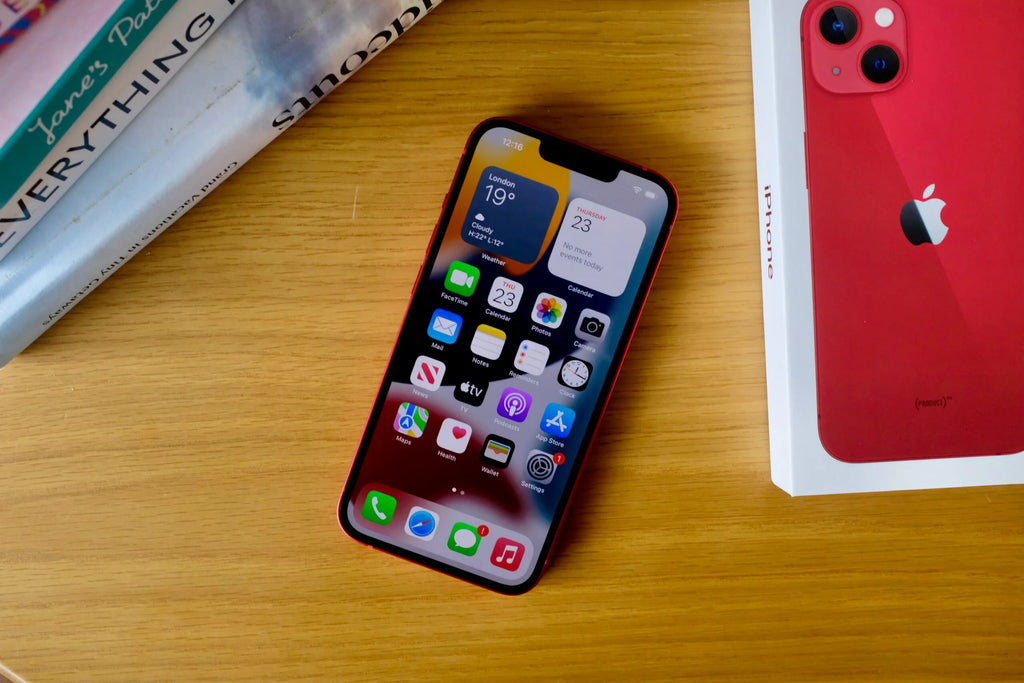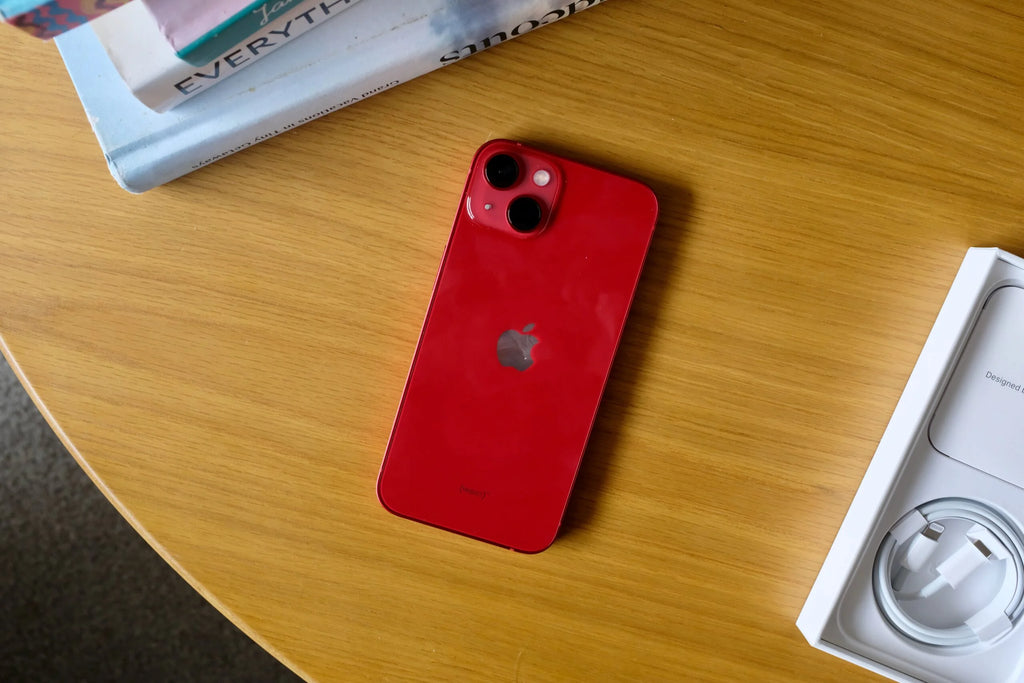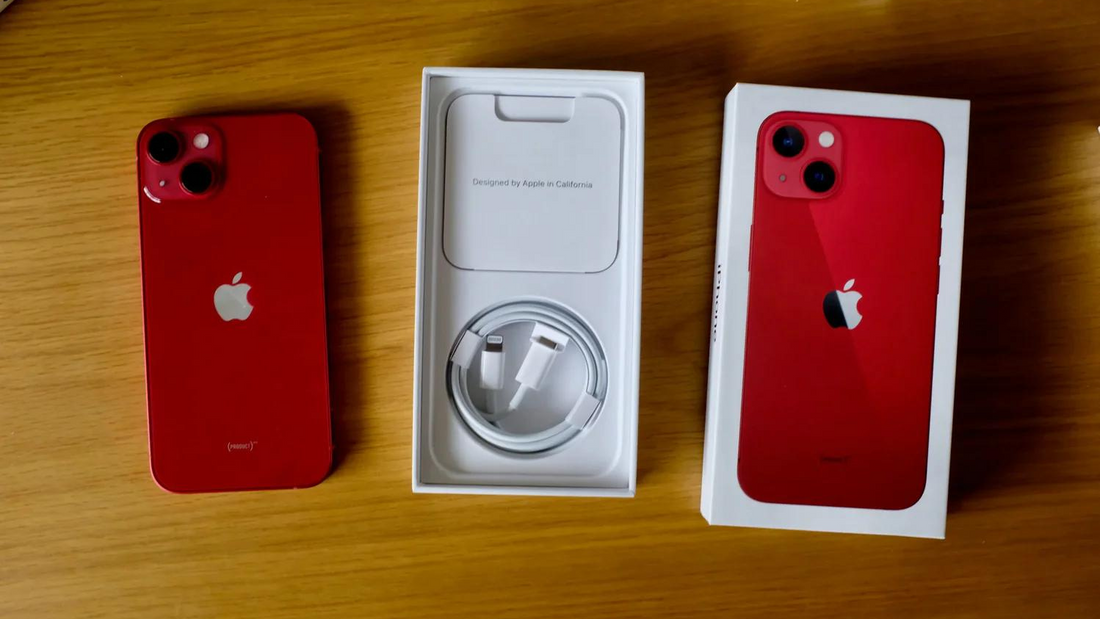The iPhone 13 improves upon the already exceptional iPhone 12 by enhancing and enhancing almost every element within its well-known framework. Each component of the phone has undergone careful alterations and improvements to provide a better product than its predecessor.
The iPhone 13 has a number of improvements over its predecessor, including a longer-lasting battery, improved camera hardware and software, a more powerful processor, a display that is easier to view in bright outdoor conditions, and a larger starting storage option that is suitable for regular users.
The iPhone 13 is a significant improvement over the iPhone 11 or previous versions. It boasts a more streamlined and lightweight design, a stunning OLED screen upgrade, and major camera function improvements. The iPhone 13 is obviously appealing for those considering an upgrade, and for good reason—it successfully does all it sets out to do.
Although the iPhone 13 is an excellent gadget on its own, creative professionals may wonder whether the iPhone 13 Pro offers enough extra functionality to warrant its higher price. This review will dive into this question, but to put it briefly, the Pro stands out as important due to its greater camera capabilities, ProRaw photography capability, and longer battery life.
SPECIFICATIONS
Dimensions: 71.5 x 146.7 x 7.65 mm
Weight: 173 grams
Processor: Apple A15 with a 4-core GPU and 4GB of RAM
Resolution: 1170 x 2532 pixels
Display: 6.1-inch OLED Super Retina XDR
Storage Options: Available in 128GB, 256GB, or 512GB
Battery Capacity: 3,227 mAh
The iPhone 13 is the primary subject of this review, however as the iPhone 13 small has almost identical characteristics, the most of the observations also apply to it. Any notable variations between the two models, particularly those relating to screen size (the 13 has a 6.1-inch display, whereas the small has a 5.4-inch display), and battery life, will be mentioned as necessary.
Apple iPhone 13 Review: Pricing
The starting price for the iPhone 13 is AED 3,399, providing 128GB of storage. For those needing more space, the 256GB model is available at AED 3,819, while the 512GB variant is priced at AED 4,669.
For the majority of users, 128GB is likely sufficient, particularly with Apple's efficient cloud-based system for offloading photos and apps. However, for individuals who prefer having a substantial amount of photos and videos stored directly on the device, opting for larger storage capacities would be wise.
The iPhone 13 offers superior value compared to the iPhone 12 and is priced at a position where upper-mid-tier transitions into flagship, offering more storage, a longer battery life, and other enhancements at a comparable price.
For those looking to economize further, the iPhone 13 mini presents a more affordable alternative, with the 128GB model priced at AED 2,999, the 256GB variant at AED 3,419, and the 512GB version at AED 4,269. For more information, refer to our guide on the best iPhone 13 deals.
Apple iPhone 13 Review: Display

The iPhone 13 has a 6.1-inch OLED screen and a resolution of 1170x2532, which equates to 460 crisp pixels per inch. The display is HDR-capable, including HDR10 and Dolby Vision. The panel is capable of a staggering 1,200 nits of peak brightness while viewing HDR material. In addition to looking amazing on paper, this brightness provides a visually beautiful experience when used in real life.
The addition of Apple's True Tone technology makes it possible to read comfortably indoors by reducing eye strain. The iPhone 13 supports the P3 color gamut, delivering vivid and accurate colors.
Additionally, these features are comparable to those of the iPhone 13 Pro. This indicates that the iPhone 13 competes head-to-head with its more expensive version in terms of the display qualities that are most important to users.
However, it’s worth noting that these specs don’t represent a significant upgrade from the iPhone 12, as they share the same display characteristics. But when compared to the iPhone 11, the iPhone 13 marks a substantial improvement, transitioning from a lower-resolution LCD screen without HDR support to a high-resolution OLED display with full HDR support.
The iPhone 13's display does outperform the iPhone 12 in one area, though, and that is because it is brighter in direct sunshine, making it easier to see when taking pictures outside or framing them. Although good, this improvement is not ground-breaking.
The iPhone 13 lacks ProMotion technology, which enables variable refresh rates, making it inferior to the iPhone 13 Pro in that area. The Pro model can refresh at speeds ranging from 10Hz for still screens to 120Hz for moving ones, producing smoother scrolling and animations as well as saving battery life on still screens.
Positively, while the increased refresh rate makes for a more visually appealing experience, there aren't many significant practical benefits. Consequently, lacking this
The iPhone 13 mini inherits all the color, HDR, and brightness advantages of its larger counterpart but packages them into a more compact 5.4-inch display. With a resolution of 1080x2340, its screen boasts a slightly higher pixel density of 476ppi, making it minutely sharper than the iPhone 13, though the difference isn’t practically significant.
Is the screen on the mini too small to be used frequently? Our knowledge implies the opposite. The size of the iPhone 13 mini is unusual in a refreshing way; it has been a long since a premium phone was manageable with just one thumb. Although testing was fun, we wouldn't trade the full-sized model for it, and we believe most creative professionals would probably feel the same way.
The portability and light weight of the iPhone 13 small are obviously enticing, but for many applications, including video streaming, photo editing, and navigating through today's sometimes crowded web sites, the larger display of the conventional iPhone 13 is indispensable.
Apple iPhone 13 review: cameras

In comparison to the iPhone 12, the camera system of the iPhone 13 has experienced noticeable changes, indicating a more significant progression than what was seen between the iPhone 12 and iPhone 11.
Larger sensors, with the wide-angle sensor allowing 47% more light intake, are among the most significant hardware improvements. The wide-angle lens now features sensor-shift stabilization as well for steadier pictures. In terms of software, the iPhone 13 debuts improved and more complex iterations of Apple's image processing, all powered by the powerful A15 CPU.
The iPhone 13 maintains a dual-lens setup, with a wide-angle lens with an f/1.6 aperture and an ultra-wide lens with an f/2.4 aperture, both supported by 12MP sensors.
The differences between the iPhone 13 and iPhone 12 are barely noticeable in ideal lighting. While there isn't a significant improvement in color accuracy or detail because modern phone cameras already excel in strong light, the iPhone 13 does have a more noticeable bokeh effect because of its larger sensor.
The iPhone 13 shows observable improvements over the iPhone 11, especially in the areas of color depth and dynamic range.
The iPhone 13 truly distinguishes itself under less-than-ideal lighting conditions. In scenarios characterized by medium or low light, it outperforms its predecessors by capturing greater detail, contrast, and color with superior finesse.
Even when you're in motion, the iPhone 13 is skilled at taking high-quality pictures. It greatly boosts your chances of taking a good action shot because it can use quicker shutter speeds and has built-in sensor stabilization, making it perfect for photographing erratic subjects like kids and dogs.
Where the iPhone 13 truly shines and represents a significant advancement over its predecessors is in difficult lighting situations. Particularly noticeable is the iPhone 13's Night Mode. Apple has designed the improved sensor to increase the dynamic range of the captured photographs rather than just boosting brightness. This method produces images with more subtle contrasts between light and shadow in Night Mode photos.
'Photographic Styles', a new feature this year, enables users to customize the iPhone's image processing to better suit their individual preferences. Users can choose from five presets (Standard, Rich Contrast, Vibrant, Warm, and Cool), with the option to further adjust each one using the "Tone" and "Warmth" sliders.
It's significant that this feature does more than just give the image a filter. Instead, it affects the iPhone's image-processing software when shooting pictures. By balancing stylised and natural aspects in your images, you can improve overall colors while the iPhone still tries to achieve realistic skin tones.
It's interesting that "Photographic Styles" have been introduced, especially given that ProRaw support isn't available on the iPhone 13. With the help of this tool, users have a little more creative flexibility to add their own distinctive flair to photographs without using lossy editing techniques. Given that filters usually suffice, it's unclear how many users will use this, but it's still a fascinating project that demystifies the frequently enigmatic process of picture processing.
The camera technology on the iPhone 13 is not without its flaws, though. Given that Android competitors at comparable price points typically include some sort of telephoto capabilities, which would have been a lovely addition for taking portraits, the lack of any zoom option stands out.
With Cinematic Mode, the iPhone 13 offers much improved video capability over its predecessor. With Dolby Vision HDR, standard video recording choices include up to 4K at 60fps (or 240fps at 1080p). The iPhone 13 performs somewhat better in terms of color and dynamic range than the iPhone 12 as a result of the bigger sensor, which is a noticeable improvement over the iPhone 11.
Particularly interesting is Cinematic Mode, which is Portrait Mode for videos. Users can tap to apply fake depth of field to a subject and it also supports automatic, intelligent focus shifts during recording and focus tweaks after recording. Even after the footage has been edited, this function allows for dynamic storytelling through focus modification.
Apple iPhone 13 Review: Power & Performance
As usual, Apple gave the iPhone 13 access to their newest and most powerful smartphone processor. The device's inside Apple A15 chip has the undisputed title of fastest processor currently on the market for smartphones. Amazingly, this high-performance CPU, similar to those found in high-end laptops, is neatly crammed inside the thin and light body of the iPhone 13.
Will the difference in processing speed between the iPhone 12 and iPhone 11 be noticeable? Since iPhones haven't experienced sluggishness in quite some time, the speed gain isn't particularly evident for routine operations like opening and switching between apps. However, you can notice speedier web page load times and quicker opens of major programs if you're upgrading from a model older than the iPhone 11.
The effectiveness, adaptability to the future, and background operations of the increased processing capacity are where its genuine value lies. The capabilities of the iPhone are gradually enhanced by incremental developments in fields like machine learning and photo processing. While some users may not immediately notice these enhancements, taken together, they result in a device that performs more quickly and effectively, improving the user experience in subtle but substantial ways.
The iPhone 13's battery life is better than that of the iPhone 11 and iPhone 12 thanks to a more effective processor and a bigger battery. One of the most well-liked features included with the gadget is the improvement in battery life.
Your usage determines how much extra battery life you get with the iPhone 13.
This increment in battery life is significant, providing extra time for taking photos, using Apple Pay on your commute home, or simply extending the time before needing to find a charging station.
The smaller iPhone 13 mini also benefits from a battery life boost. Our tests showed approximately a 15% increase in battery life during typical usage compared to its predecessor. Remarkably, the iPhone 13 mini's battery longevity is now comparable to that of the full-sized iPhone 12. While the mini still has the shortest battery life in the iPhone 13 lineup, it no longer feels like a compromise or a downgrade from previous iPhone models, holding its own against last year’s larger devices.
Apple iPhone 13 Review: Other Features
The iPhone 13 uses Face ID technology for safe facial recognition unlocking, just as its more recent forebears. The performance of the Face ID function is unaffected by the new iteration's smaller, redesigned 'notch' at the top of the screen; in our testing, it worked just as well as it did in earlier iterations.
Instead of switching to USB-C for charging, Apple still uses its own proprietary Lightning connector. With the proper power adapter, the gadget enables rapid charging up to 20W, but it's crucial to note that just a Lightning-to-USB-C cable is provided in the package and not the converter itself.
The rear of the iPhone 13 is covered in a circle of magnets that is part of Apple's MagSafe technology. With the help of this function, it is simple to attach to different mounts, and it works with MagSafe wireless charging accessories, enabling cordless charging at up to 15W. The iPhone 13 is still compatible with common Qi chargers for people who value more conventional approaches, however they have a 7.5W charging restriction.
The gadget also has excellent stereo speakers that deliver an immersive audio experience when watching videos in landscape mode. However, based on our findings, it doesn't seem like the speakers' performance has significantly improved over that of the prior model.
Apple iPhone 13 Review: Build & Design
The iPhone 13's design isn't dramatically different from the iPhone 12's. It maintains the predecessor's rounded corners, flat-sided design, and thin bezels surrounding the screen. The smartphone has glossy glass back and aluminum sides for a sleek, high-end design.
The iPhone 13's design has seen a significant change when compared to the iPhone 11. Although the iPhone 13 is noticeably smaller and considerably lighter, the screen size is same. This decrease in size and weight makes handling and navigating simpler, especially when attempting to reach the screen's most difficult-to-reach regions.
Comparing the iPhone 13 to the iPhone 12, there are minor changes. Even though the notch has been reduced, the decrease isn't great enough to noticeably alter the situation, thus it can fall short of the expectations of people wishing for a significant adjustment. The placement of the lenses on the rear cameras has changed from being vertical to being diagonal. This modification allows for the newly enhanced sensors.
The iPhone 13 offers additional color options as well. While "Midnight" is a brand-new variation of dark grey/black, "Starlight" is a novel twist on the conventional white/silver. Red, blue, and pink are other colors in the lineup. The pink, which arguably stands out as the most appealing of the five, has a delightful pearly finish while the red is eye-catching and lively. The blue also has a faint trace of a petrol tint. The optimum option differs from person to person because color preference is so subjective.
The front glass of the iPhone 13 is crafted from Apple's 'Ceramic Shield' material, renowned for its exceptional durability and resistance to shattering upon impact. This robust material provides an added layer of protection, although ideally, users won't have to test its limits.
The iPhone 13 has a stunning overall design, with its lighter weight standing out in particular when compared to the iPhone 13 Pro. Having used both the normal and Pro versions of the iPhone 12 and 13, we believe that the standard iPhone 13's reduced weight is a significant advantage over the Pro model, assuming that the user doesn't require the Pro's additional photography functions. People who are upgrading from an iPhone 11 or an older model will value the weight difference as well.
Furthermore, the iPhone 13 exemplifies impeccable build quality. The aluminum frame is flawless, the assembly is seamless, and the device feels sturdy and secure when held, reflecting Apple's commitment to delivering a premium product.
Apple iPhone 13 Review: Should You Purchase It?
The iPhone 13 distinguishes itself as a top-tier phone in the current market by flawlessly carrying out the most important functions rather than by overwhelming consumers with a long list of features. It is expertly made, with a superior camera system, a display that can hold its own against professional monitors, remarkable battery life, and processing power that more than suffices for any user's requirements.
The basic iPhone 13 doesn't lack much for those who don't need the extra camera features and marginally longer battery life provided by the iPhone 13 Pro. It continuously provides a top-notch and dependable user experience while embodying speed and sex.








 Full Protection Against Accidents or Damage and Extended Warranty for 2 Years
Full Protection Against Accidents or Damage and Extended Warranty for 2 Years 
 Eligible for battery upgrade
Eligible for battery upgrade









 Purchased on 29 Aug, 2024
Purchased on 29 Aug, 2024
